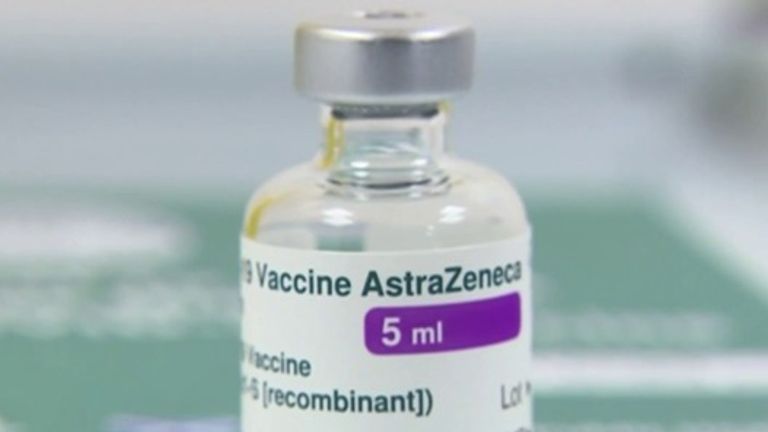COVID-19: The road to 14 million vaccines will not be smooth - but there is hope
As long as supply is maintained, the NHS has the infrastructure in place to meet the challenge ahead.
Wednesday 6 January 2021 18:04, UK
Based on past performance, the government's target of delivering 14 million vaccinations in six weeks is not a cause for optimism.聽
From PPE to Test and Trace, major logistical challenges have confounded this administration.
Thankfully, when it comes to the most pivotal project of all there are reasons to hope, cautiously and with caveats, that it might be achievable.
The main reason for optimism is the NHS. In hospitals and particularly primary care (GPs) networks, the UK has an asset that could barely have been designed better for the job it now faces. Certainly not, one suspects, by the army of private sector consultants who demonstrated their value so graphically with the £12bn fiasco of mass testing.
As a health correspondent I spend eye-glazing hours listening to acronym-laced discussions about NHS local bureaucracy, collaborative efficiencies and regional networks. But this brain-aching managerial structure, so often derided, now has the chance to demonstrate its worth.
The NHS already is a mass-vaccination network. It delivers 13 million flu jabs every year. It now has to inject the same number of COVID vaccines in just six weeks and then some, and then keep up the two million-a-week pace for the rest of the year.
The process started in hospitals and we will hear much about mega-centres like the ExCel in London and football stadia - media-pleasing big venues laced with Army support to suggest logistical muscle.
But the war will be won in small community centres like one I visited in Barton, near Oxford, this week. It was being used as a food bank on Tuesday, but on Thursday night will be converted into a pop-up vaccination centre.
From Friday morning to last thing on Sunday it will vaccinate about 1,200 people, most of them in their 80s, many of them vulnerable.
It is run by the local primary care network, the jargon for a collection of local GPs. Practice managers liaise to set up the computer hardware required for registering patients, possibly the most time-consuming part of the process, and then invite patients for appointments.
The layout is simple; patients enter through a side door from a 2m-spaced queue and are registered to ensure there is a record of the vaccination linked to their NHS number.
Then they are screened - asked questions about any existing conditions that might mean they cannot be vaccinated. Assuming all is well they are vaccinated, the most straightforward part of the process.
Then they wait for 15 minutes in a separate observation area. This is currently a requirement of the vaccine licensing, considered prudent because of a tiny number of allergic reactions to the Pfizer dose.
Then they're off, departing in the knowledge that within a fortnight they will have immune protection from a virus that has kept many housebound in fear for nine months.
The GPs I spoke to say the process can get quicker. The 15-minute observation is a limiting factor, and also a reason pharmacists may struggle to process patients in shops open for other essential supplies and services.
If the observation period were removed many more patients could be processed. Perhaps in time it will, and may be the factor that, come the spring, allows lower-priority groups and the under-50s to pop down to Boots for their jab.
Pharmacists certainly have a role, but for now hospitals and GPs have more priority patients than they have vaccines.
What supply issues exist are a combination of production and regulation. Pfizer and AstraZeneca, the only two UK-licensed vaccine manufacturers, have not yet delivered the massive volume anticipated, in part because of issues in bottling doses.
So-called "fill-and-finish" is a relatively scarce resource around a world facing rapidly rising demand as billions of doses of vaccines are ordered. The AstraZeneca dose is bottled at a plant in Wrexham that blows its own glass bottles.
Regulation requires the Medicines and Healthcare Products Regulatory Authority (MHRA) to test and approve each batch of the vaccines as safe, and there is currently a bottleneck as 3.5 million AZ doses await approval.
The MHRA's capacity to test will be stretched even further as huge volumes of product stack up, but with vaccine scepticism growing, safety testing is considered crucial to public confidence.
The road to 14 million will not be smooth but as long as the product is supplied, the NHS has the chance to restore the UK's record for handling a logistical challenge.





